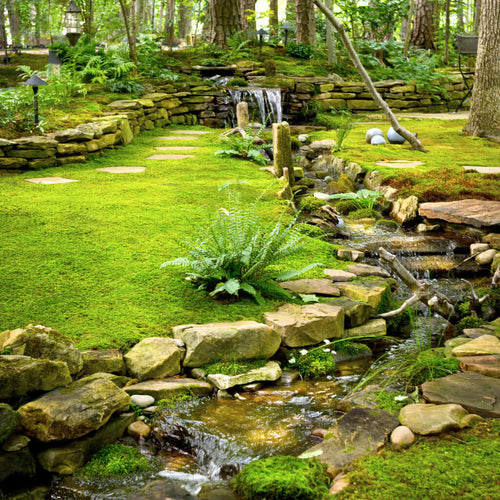Best Mosses For Shade Areas
Do you have a shady space in your garden where you cannot find anything suitable to grow? Then do integrate a moss makeover. Moss plants are primarily classified as Bryophyta, thus making them distinct from a wide range of vegetations present in your garden or yard. An exciting aspect of moss plantations is that they rely on spores for reproduction rather than seeds. Additionally, they do not possess true roots but instead derive their nutrients and moisture aerobically. Consequently, an attribute that makes moss plants ideal for flooring is that they are low-growing, and when fully grown, they can form a dense mat. Therefore, if you are looking for a dense mat for your garden, you should consider three moss types: carpet, sheet, and fern.
Carpet moss belongs to the genus Hypnum, and they are about 80 species in total. These mosses form a dense green mat in various habitats, such as moist areas and decaying wood. When fully grown, they form an excellent layer of beddings and are believed to induce sleep. In addition, since carpet moss is ideal for shade areas, they are excellent absorber of moisture and water. This makes them the perfect carpets when temperatures are high in the summer.
Fern moss belongs to the genus Thuidium and is standard on logs, tree bases, rocks, and moist soil. Unlike other mosses, fern moss is characterized by curved and fern-like branches and cylindrical spores that mature in autumn and later summer. Fern mosses are excellent carpets for shade areas because they can multiply if provided with sufficient moisture. On average, fern moss prefers wetland habitats where pH values range from 5.0 to 6.0 and temperatures are 28°F to 70°F. When fully grown, they measure about 24 inches tall, thus making them ideal carpets for shade areas. It would help if you remembered that hobbyists commonly use fern moss to accentuate and decorate lower land areas. These mosses are used as carpets for your yard.
Sheet moss or curve-leaf hypnum belongs to the Hypnum genus and is a species of carpet moss. These mosses get their name because they have a sheet-like growth pattern that often forms carpet-like mats on soil and rocks. Like carpet and fern moss, sheet moss can flourish among logs and rocks, thus making them the most adaptable plants for a homeowner searching for naturally occurring carpets. Sheet moss can also tolerate light but not hot and direct sunlight. Additionally, even though they form excellent mats, they cannot withstand continuous foot traffic. Therefore, if you plan on making these mosses your ideal carpet for your shade, ensure that the foot traffic exposed to these plants is medium.
The mosses, as mentioned earlier, are excellent for your shade area, provided you are good at taking care of them through the providence of adequate moisture and constant maintenance. Additionally, if you want the moss to be as natural as possible, try as much as possible to minimize foot traffic.



















































